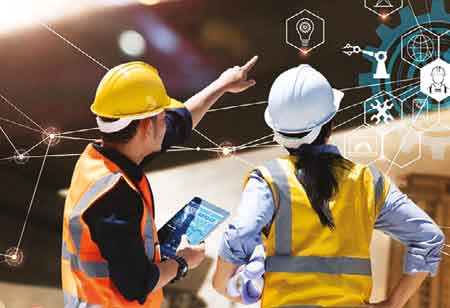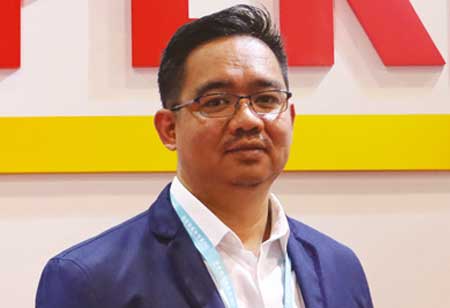THANK YOU FOR SUBSCRIBING

Significance of Soft Skills in Fleet Management
Ashleigh Turner, Asset Manager of Fleet, Australian Agricultural Company (AACo) [ASX: AAC]

 Ashleigh Turner, Asset Manager of Fleet, Australian Agricultural Company (AACo) [ASX: AAC]
Ashleigh Turner, Asset Manager of Fleet, Australian Agricultural Company (AACo) [ASX: AAC]Our biggest adversities are often the things that shape us, become our superpowers, and lead us to our greatest successes. This is the same professionally and personally, and often, the two intersect, as was the case in my life and how it led to my current role and success at the Australian Agricultural Company.
For me, that moment was escaping a violent relationship, the lowest period in my life. At the time, I could not have imagined just two years later, I would be a 2 x award-winning procurement professional and, only a few years after that, leading a game-changing procurement project for Australia’s biggest cattle company.
The life lessons I learned have become the anchor that pushed me forward.
The adversity and experience allowed me to tap into my core soft skills of connection and communication, which are key for any procurement or logistics professional. I did not know at the time they would become among my greatest superpowers in the workplace and be the very things that would help my projects succeed and make them sustainable.
How has this worked in my favor with a current project? Let me give you an example for your procurement, fleet & logistics nerds out there. I am currently working on a fleet & asset optimization project called Yellow Bull, which is essentially delivering and implementing a rotation plan for all our heavy earthworks machinery. The ‘yellow’ comes from CAT machines, which will make up 70 percent of our fleet, and the ‘bull’ comes from our cattle. I know what a genius and original name, right?
When I started just over two years ago, we had more than 150 pieces of equipment across our very remote stations in NT and QLD. Mind you, our property reach is around 1 percent of Australia’s land mass and equivalent to the size of Sri Lanka.
These machines were, on average, 16 years old, with more than 20,000 hours on them, and were, on average, performing at 35 percent idle time and 48 percent runtime. They are what we call ‘hot messes’ in millennial terms.
The original rotation plan was approved for five years, all assets were to have telematics installed (which we had never had before), and the rotation plan was only capturing 50 percent of the fleet.
We implemented a level of capability model for each of the stations. High turnover assets would enter a feed lot as they would use the loaders fast and quickly. At 6000 hours, we would send them to pastoral properties, and they would hold them until 9000 hours, which would take around six years. This project had created its very own internal market for cross-leveling assets from station to station.
Rolling out something like this made sense because of the value it would bring the business, even though previous attempts had proved challenging. The key for me was to make it evolve and make it sustainable within the business.
Fast Forward….
Where are we today two years in?
We have managed to increase our runtime to an average of 110 percent utilization, reduced our idle time to 18 percent (the industry standard is 20 percent), and leveraged the telematics data to expand our scope to include all assets over a 10-year rotation plan (up until 2031).
"The moral of this story is your pain is your power. Your adversity is met with you because you can overcome it"
Each year, we leverage the telematics data to forecast our machine utilization and replacement plan, which has never been done before. By 2031, we will have fewer than 100 assets, which is a ~35 percent reduction. All major assets like graders and loaders would be replaced at each station by FY27. By 2028, we will be selling our first-generation assets to the external market at that 85 percent life mark of 9000 hours for graders and loaders.
How Did My Soft Skills Support The Project's Success And Rollout?
1. I shifted my mindset and was vulnerable in two ways, from seeing this project as ‘impossible, too difficult, and too hard' to thinking I have survived DV, so I can survive anything. That reassurance and self-validation go a long way. I was also open and honest with station managers that I wasn’t a machine expert, had never driven one before, and most definitely wasn’t an ex-diesel mechanic. But I reassured them that I am very good at my job and that if they supported that element, I could do the rest. This approach gives vulnerability but also reassures stakeholders that they are needed and appreciated with their input. If I can speak up about my DV experience, I can tell a couple of ringers that I don’t know how much horsepower is in that 160-grader (240+ HP, a girl is onto it now).
2. I leaned heavily on people connection. The key to success stemmed from my ability to connect with people, understand them, and make them feel appreciated, included, and supported. Especially during COVID, when all supply chains were impacted, I allowed myself to be understanding of the situation towards our vendors and listened to their pain and issues, which allowed them to want to lean into assisting and supporting ours.
3. I made people feel included and a part of our mission; with so much disconnection in the world and vendors feeling as if they were disappointing so many customers due to the COVID supply chain issues, I didn’t hold it against them. I instead took the time to make them feel more included in the project and turned my attention to other performance metrics that could be delivered. For example, we focused on machine utilization, operator training, and upskilling, resulting in best-practice performance across our entire fleet.
The moral of this story is your pain is your power. Your adversity is met with you because you can overcome it. You can use it, and it can become the biggest lesson in your career and life. The reason for much of my success within my career, these projects, and in life came from the darkest of times, and I am grateful for it all.
Connect the dots. Know your pain. Know your power. And power on. And read the spec sheets, so you know the horsepower of your machines.
Read Also





















ON THE DECK